The first question most people ask when multivitamins come up in conversation is, "Why would I take one when I could just get all the nutrients I need from food?"
PricePlow's answer is that, although the quantity of food available to the average person has dramatically increased over the past century, the quality of that food has, in many ways, declined. Here's one example: Research consistently shows that, on average, the vitamin and mineral content of food has dropped significantly, thanks to poor soil management practices.[1-3]
Of course, the extent of this depends largely on where and how food is grown, but it's not practical to batch-test everything you eat for nutrient density.
Revive MD Essential Vitamins Pack – Vitamins, Minerals, and More
A high-quality multivitamin like Revive MD's Essential Vitamins Pack is your insurance policy against accidental nutrient deficiencies caused by poor soil quality.
This Vitamin Pack doesn't just contain vitamins and minerals – as we'll see, it's packed with powerful antioxidant, anti-inflammatory, and anti-estrogen compounds to help keep your body clipping along like a fine Swiss watch.
Let's get into it, but first, check the PricePlow news and deals:
Revive MD Essential Vitamins Pack – Deals and Price Drop Alerts
Get Price Alerts
No spam, no scams.
Disclosure: PricePlow relies on pricing from stores with which we have a business relationship. We work hard to keep pricing current, but you may find a better offer.
Posts are sponsored in part by the retailers and/or brands listed on this page.
This area is reserved for Team PricePlow's upcoming videos.
Subscribe to our channel and sign up for notifications so you catch it when it goes live!
Revive MD Essential Vitamins Pack Ingredients
Revive's Vitamin Pack is divided into six different pill packs (hence the name), each focusing on a different area of health. Let's analyze the ingredients in each pack, one pack at a time.
-
Immune and Organ Support
Fitting every essential nutrient into a single supplement is pretty difficult– it requires an unmanageable number of capsules. That's why Revive has chosen to prioritize the essential nutrients most directly involved in immunological and organ health.
This pack consists of 2 pills, which contain:
-
Vitamin C (as ascorbic acid) – 500 mg (556% DV)
-
Vitamin D (as cholecalciferol) – 125 mcg (625% DV)
-
Vitamin K (as menaquinone-7, menatetrenone) – 1,000 mcg (833% DV)
-
Calcium (as dicalcium malate (DimaCal)) – 50 mg (4% DV)
-
Iron (as iron ferrous bisglycinate chelate(Ferrochel)) – 5 mg (28% DV)
-
Iodine (as potassium iodide) – 100 mcg (67% DV)
-
Magnesium (as magnesium oxide, dimagnesium malate) – 100 mg (24% DV)
-
Zinc (as zinc bisglycinate chelate) – 11 mg (100% DV)
-
Selenium (as selenium glycinate complex) – 200 mcg (364% DV)
-
Copper (as copper bisglycinate chelate) – 0.5mg (56% DV)
-
Manganese (as manganese bisglycinate chelate) – 2.3 mg (100% DV)
-
Chromium (chromium nicotinate glycinate chelate) – 100 mcg (286% DV)
-
Molybdenum (as molybdenum bisglycinate chelate) – 90 mcg (200% DV)
-
Potassium (as potassium glycinate complex) – 50 mg (1% DV)
In formulating this pack, Revive made a few choices we want to specifically highlight and applaud:
- Vitamin D as cholecalciferol – Cholecalciferol (vitamin D3) is regarded in peer-reviewed literature as more effective at raising vitamin D blood levels than the alternative, ergocalciferol (vitamin D2).[4,5] We're glad to see Revive opting for the more effective of the two vitamers.
- Vitamin K in multiple forms – Here we have two different forms of vitamin K2, namely MK-7 and MK-4 (listed as menatetrenone). We think this is a smart choice out because, contrary to what many in the supplement space think, researchers haven't necessarily settled the debate over which form is better.
Revive MD has split up their Vitamin D3 and K2 supplements - in this article we discuss why!
While MK-7 is more bioavailable, has a longer half-life, and has been found more effective than MK-4 in some studies,[6] MK-4 has been shown to activate important cellular mechanisms for bone growth and enzymatic activity that MK-7 apparently doesn't.[7,8] The bottom line is both of these forms are doing something.
Regarding that generous dose: There's no known toxicity associated with vitamin K2 intake[9] – daily doses of 135 milligrams, which is 135 times higher than the 1-milligram dose used in Essential Vitamins Pack, have been used safely in clinical research settings.[10] Still, 1 milligram is a lot more than you usually get in a multivitamin, so we're glad to see a relatively high dose used in this Vitamin Pack.
- Chelated minerals – A chelated mineral form is one where the mineral molecule has been conjugated with an amino acid. In general, this significantly increases the bioavailability of the mineral.[11-13] As you can see from the label, Revive uses chelated forms of iron, zinc, selenium, copper, manganese, chromium, molybdenum, and potassium.
-
-
Supports Healthy Inflammation Response
This pack contains 1 capsule, with just 1 ingredient. But that ingredient is an anti-inflammatory all-star:
Turmeric Extract (95% Curcuminoids) (Curcuma longa)(root) – 400 mg
Turmeric is an orange-colored spice that's related to ginger. In both traditional Chinese medicine (TCM) and Ayurvedic medicine, it's been employed for hundreds —if not thousands —of years to treat or manage a huge variety of conditions.[14,15]
Need more? See Revive MD Turmeric+, one of their longer-held formulas. It's not just a joint supplement. It's an all-encompassing anti-inflammation support supplement that also helps with gut health!
Turmeric's key bioactive constituents are the curcuminoids, of which curcumin is one. Although curcumin is probably the best known and studied of the group, all the curcuminoids have broadly similar effects on human physiology – specifically, they're all powerful anti-inflammatory and antioxidant compounds.[16]
Thus, it's reasonable to draw inferences about the curcuminoids as a whole based on the curcumin-specific literature. What that literature tells us is that curcumin is as close to a catch-all supplement as we've ever seen – the list of symptoms it can improve is basically a laundry list. From depression to cancer and diabetes, pretty much all the so-called diseases of civilization appear to be improved in some way by curcumin supplementation.[17,18]
This is, again, thanks to curcumin's profound anti-inflammatory effects.[17-19] Inflammation is a fundamental mechanism behind many different kinds of pathophysiology, so it's not surprising to see that decreasing inflammation could have such wide-ranging benefits for health.
One peer-reviewed paper even refers to curcumin as a "nature-made Jack-of-all-trades."[18]
Curcumin can also improve immunity, thanks to its ability to improve the functioning of T cells, B cells, macrophages, neutrophils, NK cells, and dendritic cells.[14,15]
-
Free Radical Support
The 1 capsule found in this pack contains:
Coenzyme Q10 (CoQ10) – 100 mg
Coenzyme Q10 (CoQ10) is a potent antioxidant that's specifically good for facilitating mitochondrial respiration.[20]
Since your mitochondria are responsible for making all the adenosine triphosphate (ATP) by your cells to carry out their metabolic functions, it shouldn't come as a shock that CoQ10 deficiency has been implicated in major illnesses like diabetes, cancer, neurodegenerative disorders, and cardiovascular disease.[21]
CoQ10 is particularly good at supporting cardiovascular health and function, as it can help stabilize nitric oxide (NO) and ultimately trigger vasodilation, keeping blood pressure and heart rate from rising too high.[22]
-
Heart Health
This 1 capsule pack gives you:
Arjuna Extract 10:1 (Terminalia arjuna)(bark) – 400 mg
Arjuna is a tree found on the Indian subcontinent. It has a long history of use in Ayurvedic medicine, which uses it to improve cardiovascular issues like high blood pressure, congestive heart failure, chest pain, and high blood lipids.[23]
Arjuna naturally contains high levels of potent phytochemicals like triterpenoids, flavonoids, glycosides, and β-sitosterol.[23] Of these bioactive constituents, it's apparently the triterpenoids and flavonoids that are most responsible for arjuna's health benefits.[23]
Specific bioactive constituents in arjuna, including the eponymous triterpene arjunolic acid, have been shown to protect against a wide range of chemically-inflicted cardiac injuries.[23] Perhaps most interestingly, arjunolic acid has been found to extend the life of key antioxidants like superoxide dismutase, catalase, GPO, ceruloplasmin, α-tocopherol, reduced glutathione, ascorbic acid, lipid peroxide, and myeloperoxidase.[24]
A randomized controlled trial showed that 500 milligrams per day of arjuna extract increased VO2 max and decreased resting systolic blood pressure, two key markers of cardiac function.[25]
-
Essential Fatty Acids
This pack consists of 2 softgels, from which you get:
Total Omega-3 Acids – 1,400 mg (800 mg EPA + 600 mg DHA, from fish oil)
The benefits of supplementing with fish oil that's rich in omega-3 fatty acids are manifold.
Probably the most common reason for taking fish oil is to improve cardiovascular health. That's because, according to multiple large meta-analyses, the fish oil can significantly reduce blood triglycerides, which can be a big deal since elevated triglyceride levels are a known risk factor for cardiovascular disease.[26-30]
Additionally, fish oil can increase HDL (good) cholesterol,[28,30] and decrease blood pressure.[31]
That fish oil can decrease triglycerides while raising HDL is good news for anyone who's concerned about their metabolic health – the triglyceride-to-HDL ratio is an excellent predictor of insulin sensitivity, and the lower the better.[32,33]
There are potential cognitive benefits in fish oil supplementation too. It seems to have an anti-anxiety effect[34-38] and can help mitigate age-related cognitive decline.[39]
With so many different benefits, is there a common mechanism of action? The answer appears to be yes – you can ascribe all of this, at least in part, to fish oil's powerful anti-inflammatory effect.[40-45]
-
Potent Antioxidant
Finally, we have Essential Vitamin Pack's antioxidant support, in 1 capsule:
Apigenin (4',5,7-Trihydroxyflavone) (Apium graveolens var. dulce) – 100 mg
Apigenin is a flavonoid, a class of polyphenol antioxidants that are renowned for their exceptional ability to help the body fight oxidative stress.
Apigenin itself has a high degree of direct antioxidant activity, as measured by the oxygen radical absorbance capacity (ORAC) test.[46] But what's even more interesting than that is animal research suggesting that apigenin can also increase the activity of the endogenous antioxidants catalase (CAT), superoxide dismutase (SOD), and glutathione (GSH).[47] We suspect this is a big reason why Revive MD chose this flavonoid as the flagship antioxidant for their Vitamins Pack.
Aromatase inhibitor
But apigenin also has some more unusual properties – for example, besides being a powerful antioxidant, it also inhibits aromatase,[48] an enzyme responsible for converting androgens like testosterone into estradiol, a form of estrogen.[49]
This is increasingly relevant to most consumers as, unfortunately, estrogen dominance is a growing public health concern.[50] The modern environment is awash in synthetic xenoestrogenic compounds, which mimic the actions of endogenous estrogen by stimulating the same cellular receptors.[51]
Among other things, estrogen dominance can cause unwanted weight gain[52,53] and even obesity,[53] so it's definitely something we want to keep under control.
Improves mitochondrial function
Apigenin can also help support your mitochondria's ability to synthesize adenosine triphosphate (ATP), by increasing your ratio of NAD+ to NADH.[54] It does this by inhibiting CD38, an enzyme responsible for degrading NAD+.[55] This effectively increases the half-life of your circulating NAD+.
Given the extreme and fundamental importance of mitochondrial function for overall health, it's probably not very surprising that the NAD+-to-NADH ratio is an excellent predictor of metabolic health and longevity[56] – and that, according to a 2019 research review of apigenin, the flavonoid is a potential therapy for such devastating illnesses as Alzheimer's, diabetes, cancer, amnesia, insomnia, and depression.[57]
Overall, we'd say Revive MD made an excellent choice for the antioxidant support pack in Essentials Vitamin Pack.
Stacking
There are so many stack opportunities, it's impossible to get into it. Revive MD can help nearly everyone -- so check out our Revive MD supplement listing. Some great ideas are to look into their Gut Health Stack or at least Revive MD Fiber, which brings the best of both worlds to keep things moving!
Conclusion

Supplements formulated to optimize your health! See them all on our Revive MD page on PricePlow.
Revive MD's latest product here is an excellent daily supplement for anyone looking to optimize health and wellness – despite the name, this goes way beyond vitamins. All the ingredients in other, non-vitamin and non-mineral packs are shrewdly chosen. Curcumin, CoQ10, fish oil, and apigenin are all bona fide heavy hitters. Arjuna is less proven, but the research we've seen is really compelling.
Last, one interesting thing that's not in here: any form of Vitamin A. Interesting. Stay tuned to PricePlow to understand why this may be the right move.
Revive MD Essential Vitamins Pack – Deals and Price Drop Alerts
Get Price Alerts
No spam, no scams.
Disclosure: PricePlow relies on pricing from stores with which we have a business relationship. We work hard to keep pricing current, but you may find a better offer.
Posts are sponsored in part by the retailers and/or brands listed on this page.

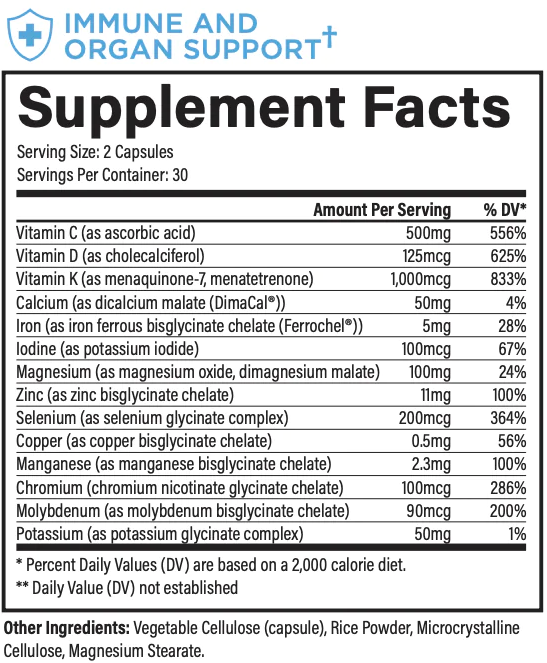
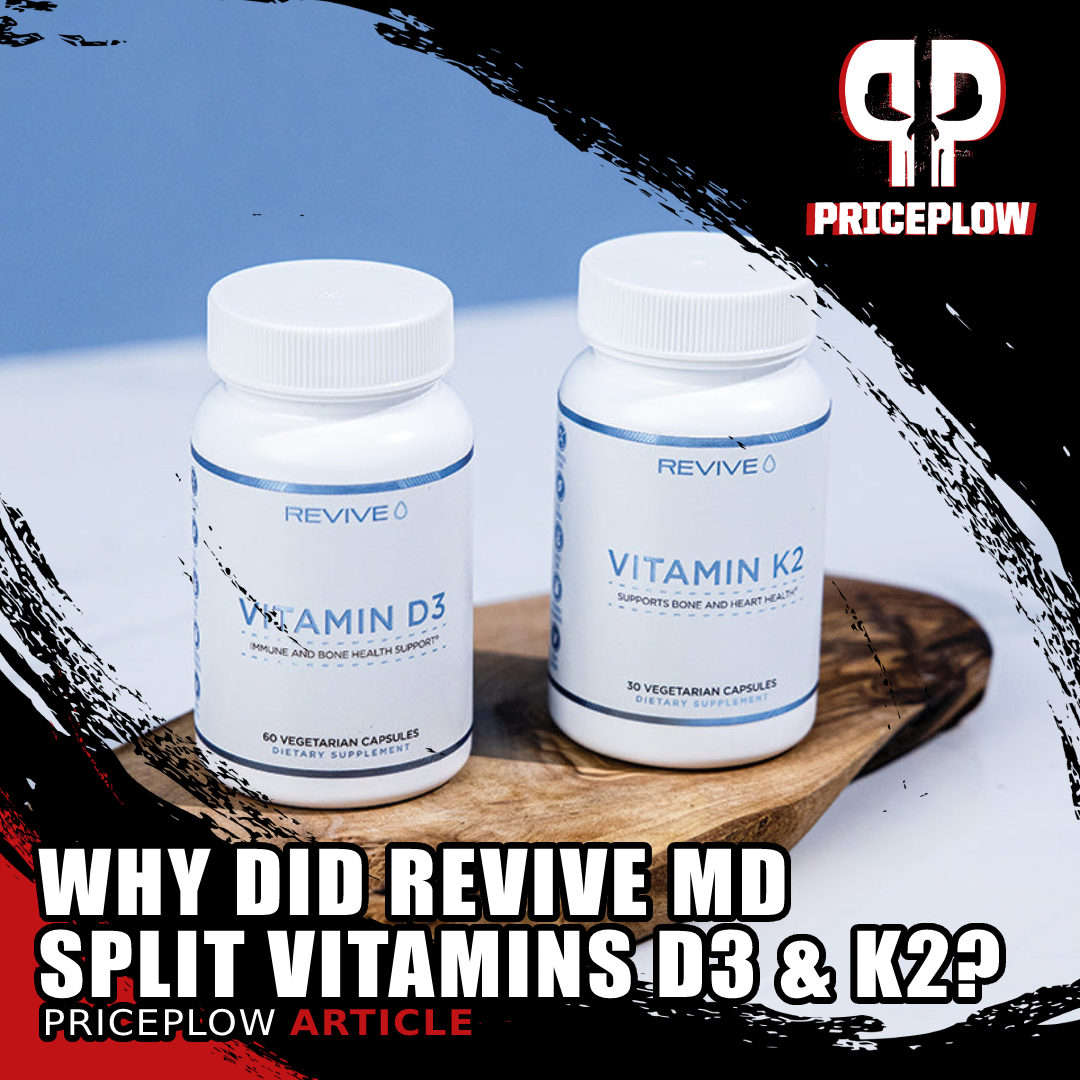
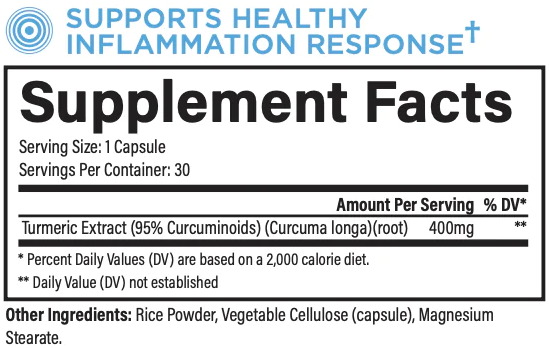



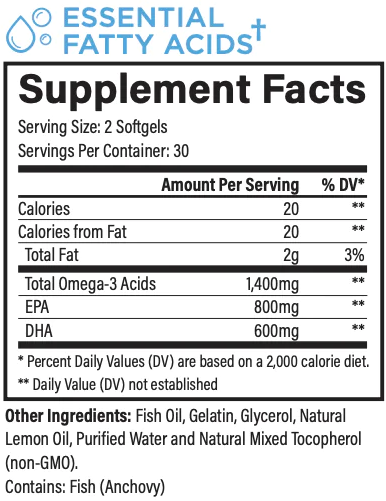

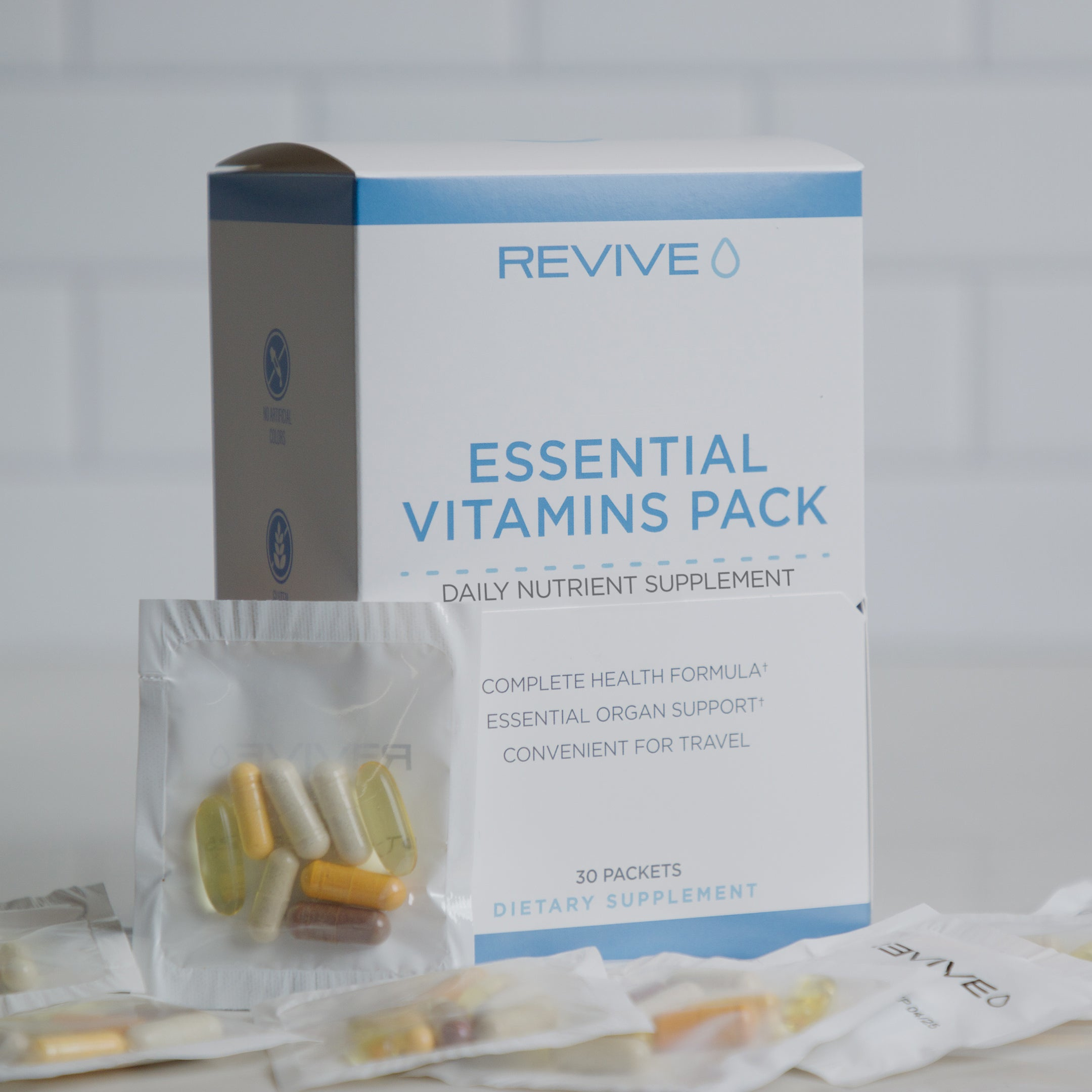


Comments and Discussion (Powered by the PricePlow Forum)